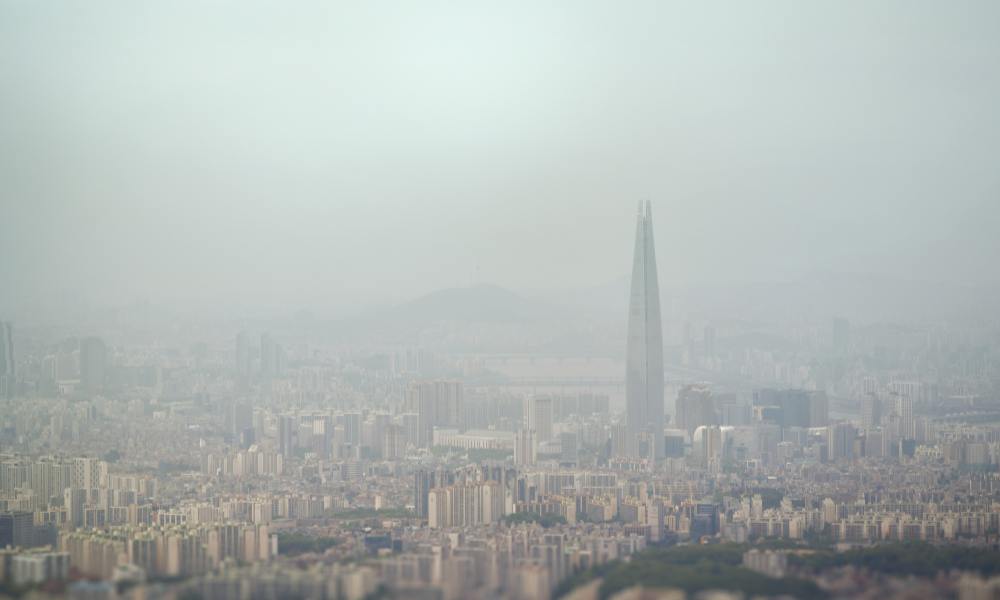
Which Pollutants Are Crucial to Test for in Chennai’s Air — and Why?
Air pollution has become an increasingly serious concern for major Indian cities — and Chennai is no exception. Once known for its relatively moderate pollution compared to northern metros, Chennai has seen rising air quality challenges over the past decade due to rapid urbanization, industrial activity, and vehicular emissions.
Understanding which air pollutants are crucial to monitor can help authorities and citizens take meaningful actions toward better air quality and public health. This blog explores the key pollutants present in Chennai's air, their sources, health impacts, and why regular testing is essential.
Why Testing Air Pollutants Matters in Chennai
Air quality testing is more than just tracking a number like the AQI (Air Quality Index). It helps in:
- Public health protection: Identifying and controlling hazardous pollutants can reduce disease burden.
- Urban planning: Informing policy decisions around transport, zoning, and industry.
- Regulatory compliance: Ensuring Chennai meets national air quality standards set by CPCB (Central Pollution Control Board).
- Emergency response: Alerts during hazardous pollution spikes (e.g., Diwali, industrial incidents).
- Citizen awareness: Enabling people to make lifestyle choices based on air quality data.
Major Pollutants in Chennai’s Environment
1. Particulate Matter (PM2.5 and PM10)
What is it?
Particulate matter consists of tiny solid and liquid particles suspended in the air. PM2.5 particles have a diameter of 2.5 microns or smaller, while PM10 are up to 10 microns.
Sources in Chennai
- Vehicle exhaust (especially diesel)
- Road and construction dust
- Industrial emissions
- Burning of waste and biomass
- Unpaved roads
Why It’s Crucial to Monitor
Because PM2.5 reaches the bloodstream and goes deep into the lungs, it is especially harmful. Prolonged exposure increases the risk of:
- Asthma and bronchitis
- Heart attacks
- Lung cancer
- Premature death
According to several air quality reports, PM2.5 levels in parts of Chennai routinely exceed the WHO safe limit of 5 µg/m³ (annual average).
2. Nitrogen Dioxide
What is it?
NO₂ is a reddish-brown gas released from burning fossil fuels. It's a major contributor to smog and respiratory ailments.
Sources in Chennai
- Traffic emissions
- Thermal power plants (like North Chennai Thermal)
- Diesel generators
- Industrial processes
Health Impact
NO₂ irritates airways and can:
- Trigger asthma
- Increase susceptibility to respiratory infections
- Reduce lung function, especially in children
3. Sulphur Dioxide
What is it?
A pungent gas formed when sulfur-containing fuels like coal and oil are burned.
Sources in Chennai
- Industrial zones (Manali, Ennore)
- Thermal power plants
- Refineries
- Fuel combustion in ships and heavy vehicles
Health and Environmental Effects
- Breathing difficulties
- Aggravation of existing lung diseases
- Acid rain, which damages crops, buildings, and aquatic systems
4. Carbon Monoxide
What is it?
An odorless, colorless gas that is potentially fatal at high concentrations.
Sources in Chennai
- Traffic congestion
- Poorly ventilated kitchens using biomass fuels
- Power backups like diesel generators
- Incomplete combustion of fossil fuels
Why It’s Dangerous
The blood's ability to deliver oxygen is hampered by CO. High levels can lead to:
- Dizziness and confusion
- Reduced cognitive performance
- Heart stress and even death in enclosed areas
5. Ground-Level Ozone
What is it?
Unlike the “good” ozone in the upper atmosphere, ground-level ozone is a secondary pollutant formed by chemical reactions between NOx and VOCs in sunlight.
Sources in Chennai
- Car and industrial emissions
- Use of solvents and fuels
- Hot and sunny weather, which accelerates ozone formation
Why It’s Harmful
- Cause chest pain, coughing, and throat irritation
- Worsen chronic respiratory diseases
- Impair lung development in children
6. Volatile Organic Compounds (VOCs)
What is it?
VOCs are a group of organic chemicals that easily become vapors or gases.
Sources in Chennai
- Paints, adhesives, and cleaning products
- Petrol stations and fuel storage
- Waste burning
- Industrial solvents
Impact on Health and Air Quality
Some VOCs like benzene and formaldehyde are carcinogenic. They also contribute to ground-level ozone formation, worsening air quality indirectly.
7. Lead and Other Heavy Metals
What is it?
Toxic metals like lead, arsenic, and mercury that can be airborne or present in dust particles.
Sources in Chennai
- Battery manufacturing
- E-waste handling
- Paint and chemical industries
- Old vehicles with leaded fuels
Health Impact
- Lead affects neurological development, especially in children
- Other heavy metals can damage the kidneys, liver, and nervous system
Testing for these pollutants is important in areas near industrial estates and informal e-waste processing units.
Chennai's Air Quality Monitoring: How It's Done
Agencies Involved
- Tamil Nadu Pollution Control Board (TNPCB)
- Central Pollution Control Board (CPCB)
- National Air Quality Monitoring Programme (NAMP)
Monitoring Tools
- Continuous Ambient Air Quality Monitoring Stations (CAAQMS)
- Manual samplers in specific zones
- Satellite data and mobile sensor networks
Real-Time Access
Residents can check Chennai’s air quality using:
- SAFAR app
- CPCB website
- AQICN.org
- Local environment department portals
Air Pollution Hotspots in Chennai
- Manali and Ennore – Industrial and thermal power emissions
- T. Nagar, Mount Road, Anna Salai – Vehicular pollution
- Perungudi landfill – Burning of waste and methane release
- North Chennai – Proximity to ports and refineries
What Can Chennai Residents Do?
- Using public transport and carpooling
- Avoiding open burning of waste
- Supporting green energy and rooftop solar
- Planting trees and maintaining greenery
- Monitoring AQI before outdoor activities
- Using masks and air purifiers during high pollution periods
Monitoring to Manage
Chennai’s air quality is a growing concern that affects everyone — from schoolchildren to senior citizens. By identifying which pollutants are most dangerous and where they come from, we can take focused steps to reduce exposure and improve air standards.

